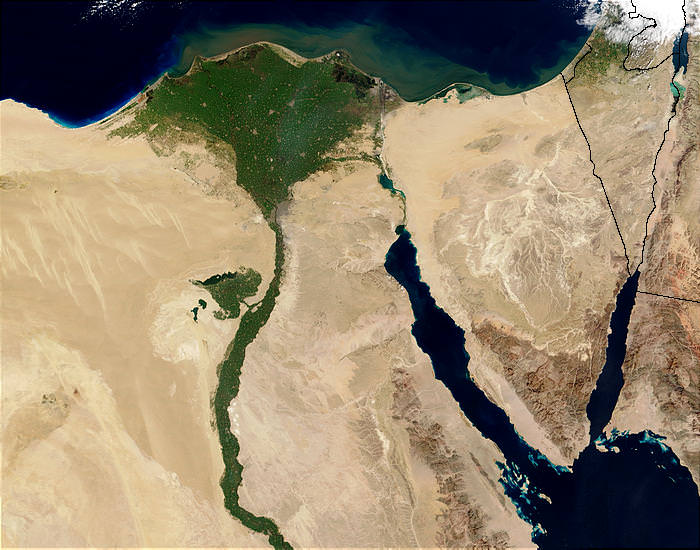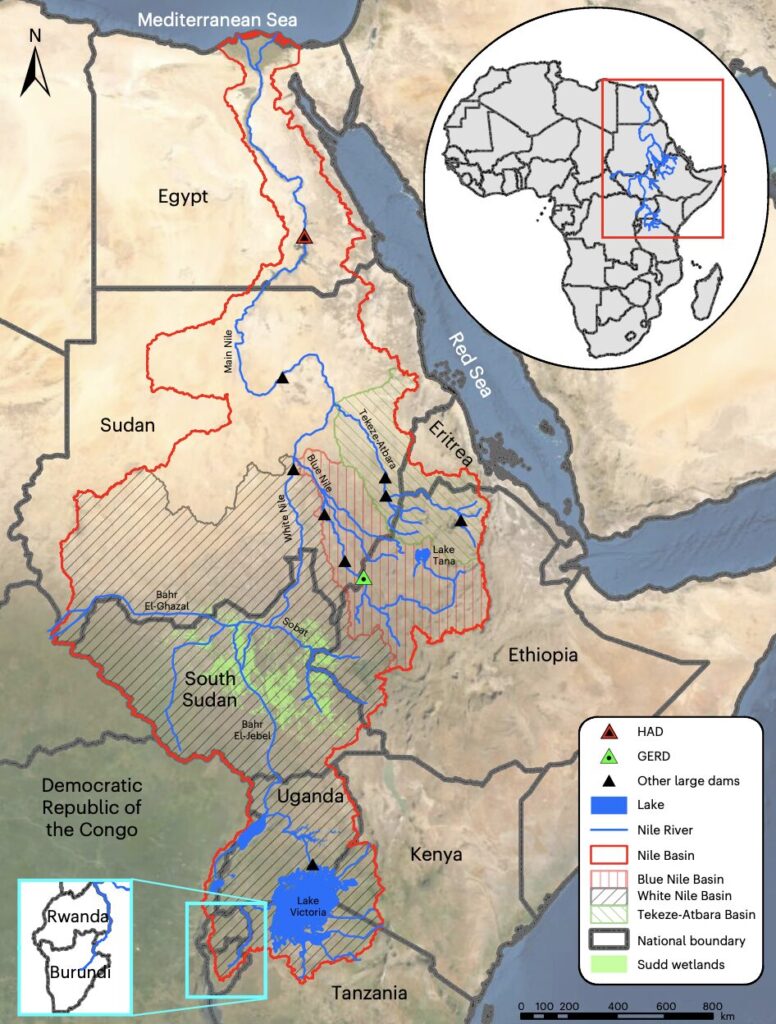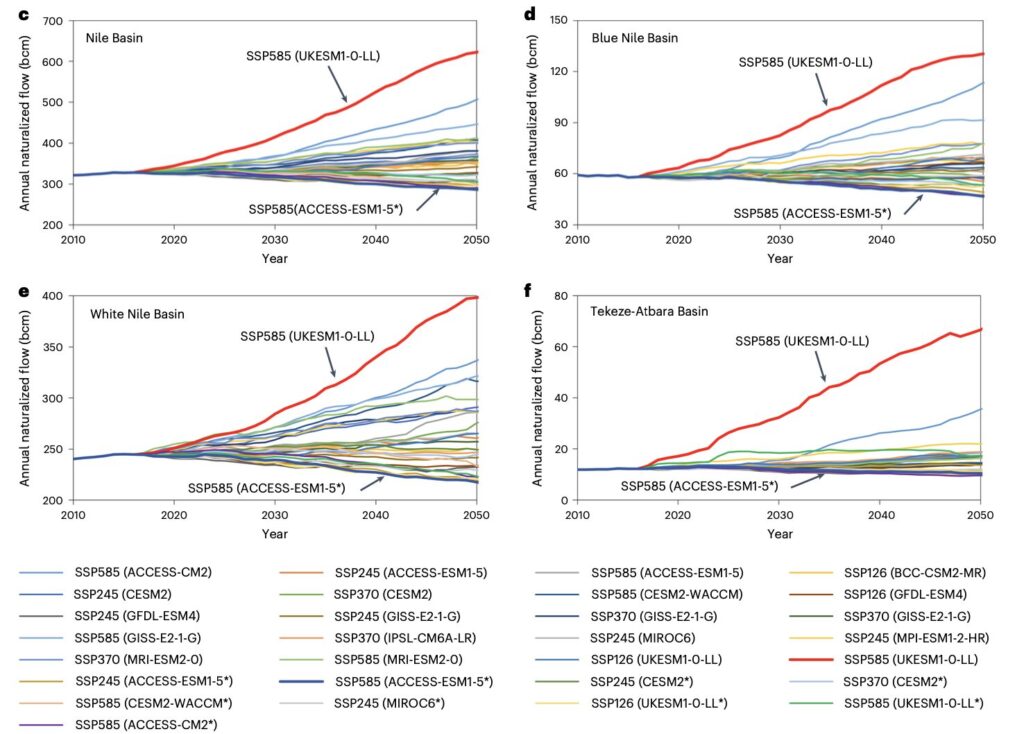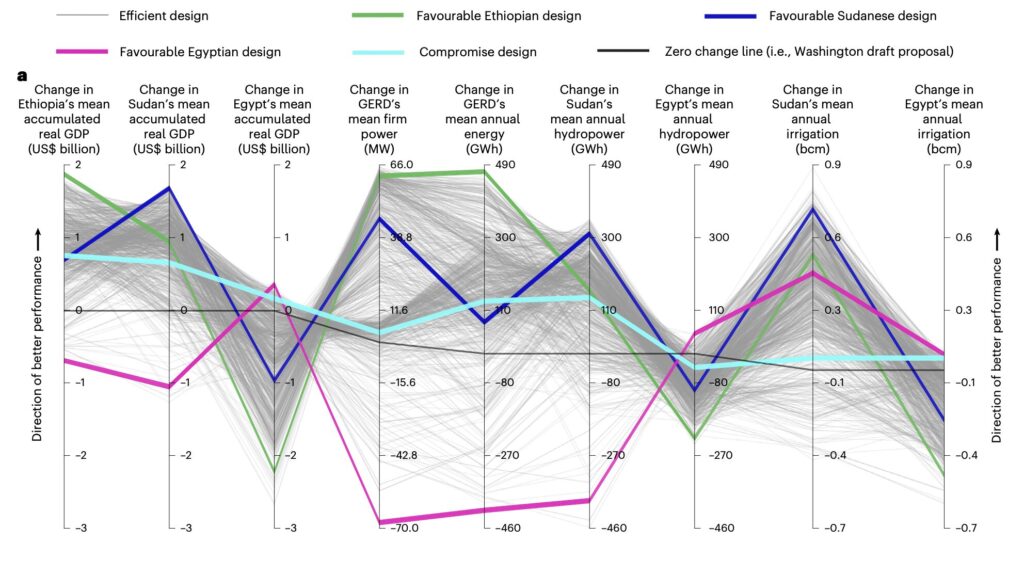Cooperative adaptive management of the Nile River with climate and socio-economic uncertainties

Introduction
The Nile Basin faces the threat of climate change alongside water scarcity, rapidly rising pressures on water resources due to population and economic growth, and a politically complex transboundary water management system. The Nile Basin is located in northeastern Africa, occupies around 10% of the continent’s area and extends over 11 countries.

The uncertainties around the hydrological and socio-economic implications of climate change pose a challenge for Nile River system management, especially with rapidly rising demands for river-system-related services and political tensions between the riparian countries. Cooperative adaptive management of the Nile can help alleviate some of these stressors and tensions.
The authors present a planning framework for adaptive management of the Nile infrastructure system, combining climate projections; hydrological, river system and economy-wide simulators; and artificial intelligence multi-objective design and machine learning algorithms.
They demonstrate the utility of the framework by designing a cooperative adaptive management policy for the Grand Ethiopian Renaissance Dam (GERD) that balances the transboundary economic and biophysical interests of Ethiopia, Sudan and Egypt. This shows that if the three countries compromise cooperatively and adaptively in managing the dam, the national-level economic and resilience benefits are substantial, especially under climate projections with the most extreme streamflow changes.
Adaptive planning framework for Nile management
This study introduces an adaptive planning framework for managing the Nile infrastructure system in the face of climate and socio-economic changes, including four interconnected stages:
Stage 1: Selecting plausible climate change projections;
Stage 2: Simulating the hydrological implications of the selected projections;
Stage 3: Simulating the economy-wide and river system infrastructure performance under the selected projections;
Stage 4: Designing an adaptive plan for managing river system infrastructure.
Methodology
- In the first stage, 29 transient climate change projections to 2100 were constructed on the basis of bias-corrected CMIP6 Tier 1 simulations. Spanning the Shared Socio-economic Pathways, 20 general circulation model (GCMs) simulations were selected to represent the joint distribution of end-of-century changes in precipitation and temperature over the Nile Basin according to the CMIP6 ensemble. Additionally, nine projections with decreasing precipitation trends were synthesized to counteract the uncertain precipitation increases often seen in GCMs over East Africa.
- The second stage of the framework is to calibrate and use a distributed hydrological model for the Nile driven by historical climate time series and the 29 climate projections to generate naturalized historical and projected streamflow time series.
- The third stage of the framework aims to capture these implications through integrated economy-wide and river system simulators. Dynamic-recursive annual computable general equilibrium (CGE) models were developed for Ethiopia, Sudan and Egypt to simulate their economies.
- The fourth stage of the framework seeks to design adaptive management policies for the Nile water infrastructure. Climate adaptation planning is achieved using an artificial-intelligence-based approach to design efficient adaptive management plans. These plans involve adaptation mechanisms based on new information gained about climate change impacts on the river system and riparian countries as the future unravels.
You can read the full methodology in the original journal article – downloadable on the right hand-side.
Implications of climate change for the Nile
The results show varying impacts of climate change on the naturalized streamflow of the Nile and some socio-economic characteristics of Ethiopia, Sudan and Egypt.
The 30-year moving average naturalized streamflow data indicate that the mean Nile streamflow could change by between −13% and +90% by 2050 compared with 2020. The intra-annual variability of the naturalized streamflow of the Nile and its main tributaries is projected to change with the biggest changes occurring under SSP5 and high EOC temperature projections.
The inter-annual streamflow variability shows varying changes depending on different SSPs (Shared Socioeconomic Pathways), forcing levels, GCMs and time horizons. The increase in temperature imposed by climate change is projected to increase Potential Evapotranspiration, which would increase future irrigation water demands and evaporation from open water bodies.
Various SSPs that underpin climate projections have different implications for baseline GDP and population growth and urbanization in Ethiopia, Sudan and Egypt over 2021–2050. The highest economic growth for each of the three countries is projected under SSP5, whereas the lowest economic growth occurs under SSP3.

Cooperative adaptive management policy for the GERD
The authors use the Nile adaptive management framework to formulate and design an adaptive management policy for the GERD’s initial filling and long-term operation for 2020–2045, involving short-term rules and interim and long-term adaptation measures to cope with climate change uncertainties.
The formulation is based on cooperative behaviour whereby the riparian countries consider each other’s interests through adaptive measures. The formulation of the GERD adaptive filling and operation policy is fully described in the original study – downloadable on the right hand side.
To help Egypt during droughts, an interim minimum monthly drought mitigation water release from the GERD is activated if the storage of the High Aswan Dam (HAD) reservoir stays below 60 bcm over the past six months for an extended period; this period is termed the drought trigger.
Long-term adaptation measures are applied to the GERD’s regular and reduced power targets, the drought trigger of the HAD, and the interim minimum monthly drought mitigation water release. The long-term adaptation measures are triggered on a five-year interval, involving increasing or decreasing these four GERD management variables on the basis of the change in the mean annual inflow to the dam over the past five years in relation to the historical mean annual inflow over 1980–2019.
Economic and river system benefits of adaptive GERD management
The results reveal differences between the aggregated economy-wide and river system performance objectives over 2020–2045 under 1,032 efficient GERD adaptive management options and the performance under the Washington draft proposal.
Four efficient adaptive GERD policy designs are highlighted in the figure below (the green, blue, purple and cyan lines): a favourable design for each of Ethiopia, Sudan and Egypt that results in the highest national accumu- lated GDP benefits, and an example compromise design that results in at least 40% of the highest national accumulated GDP benefits for each of the three countries. There is a trade-off between the three countries in achieving the highest possible GDP performance.

The results reveal varying costs and benefits across climate projections. For instance, in the most favourable design for each country taken individually, the discounted GDP over 2020–2045 could increase by up to US$15.8, US$6.3 and US$3.0 billion for Ethiopia, Sudan and Egypt, respectively, compared with the Washington draft proposal. However, these country-centric designs lead to GDP losses for at least one of the other two countries. In contrast, the mean GDP changes are positive for the three countries under the compromise design.
The temporal evolution of GDP changes under different climate projections and GERD policy designs shows that adaptive GERD management benefits Ethiopia and Sudan the most under climate projections with the highest streamflow.
Concluding remarks
The analysis of the GERD’s initial filling and long-term operation shows that adaptively managing the dam to maximize the national benefits of any of the three countries would be costly for at least one of the other two countries. We show that a compromise adaptive management approach could produce balanced benefits for the three countries. These results demonstrate the opportunity cost of not implementing collaborative adaptive solutions, especially under extreme climate change projections.
Practical use of the proposed framework in Nile negotiations requires riparian countries to negotiate an adaptive formulation and define the ranges within which decisions can be optimized. The philosophy behind the adaptive formulation should be guided by a long-term vision to counter future climate and socio-economic uncertainties. The efficient cooperative adaptive designs emanating from the agreed formulation should then be negotiated to find a compromise solution that balances national-level and basin-wide performance.



(0) Comments
There is no content